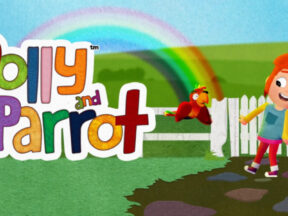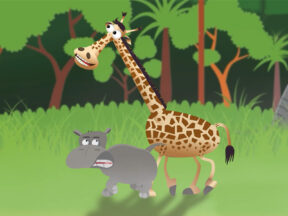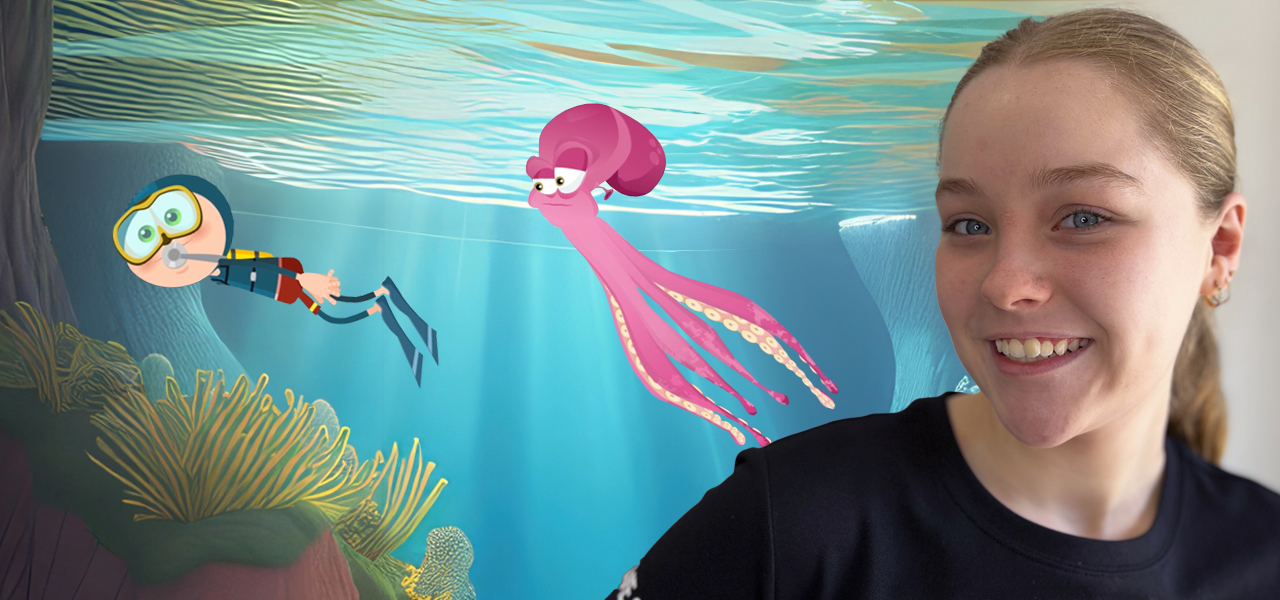
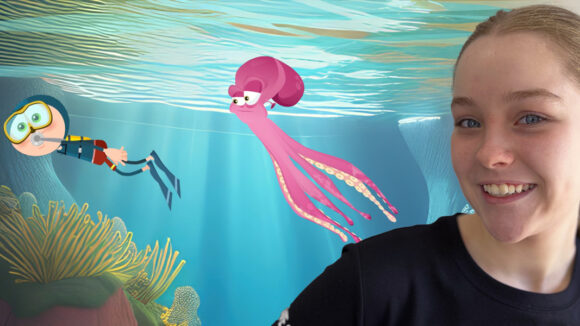
Artists Of Any Skill Level Can Create Professional Quality Animation With Cartoon Animator 5.2’s Motion Pilot
Cartoon Animator (CTA) user and developer Garry Pye has been working with CTA for over a decade and has journeyed from casual animator to 2d community manager for the software’s developer Reallusion. Pye, joined by his 15-year-old daughter Maddison, recently sat down to showcase how easy the new CTA5.2 Motion Pilot makes the 2d animation process.
Take it away Garry:
Garry Pye: With a layered scene setup in Stage Mode, Garry and Maddison demonstrate the tools and features of Motion Pilot and how anyone can now produce real-time, smooth, and professional results in minutes.
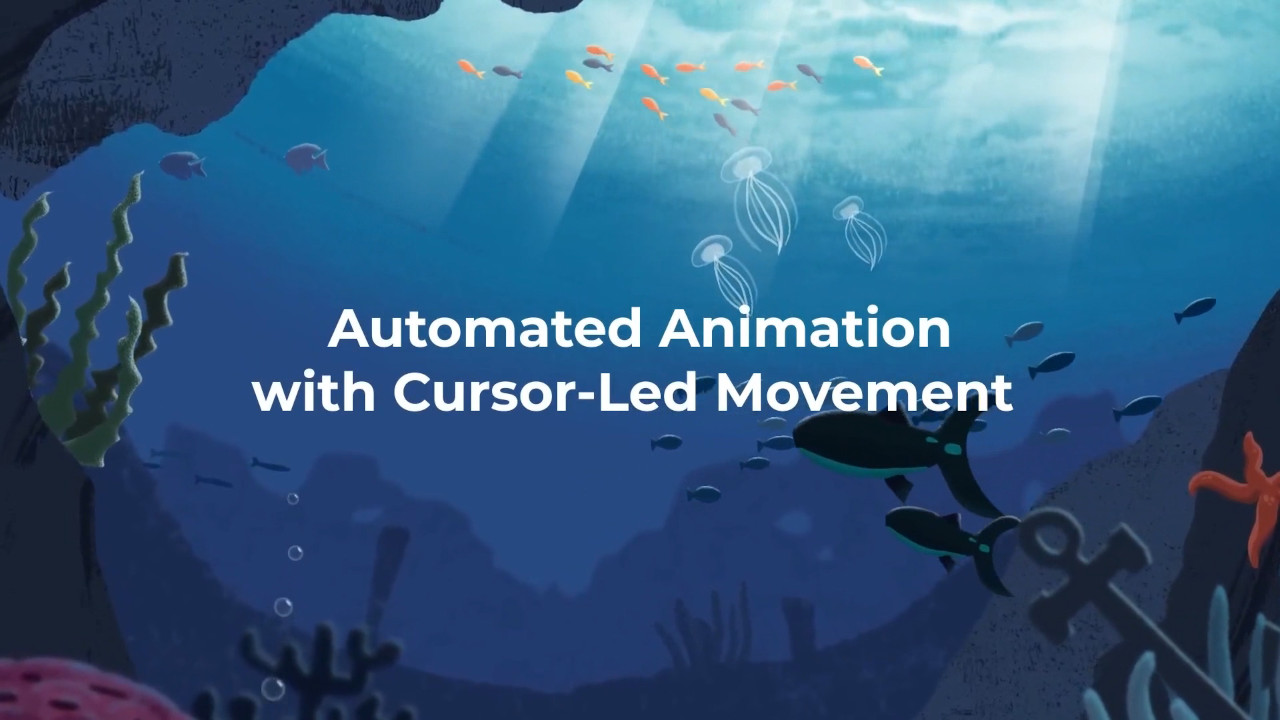
Cartoon Animator has long been the easiest and fastest way to create 2d animation. With Cartoon Animator, you can produce quality projects in no time, regardless of your skill level in animation. CTA makes animating easy for everyone, and today, we will show you how.
With the latest update to Cartoon Animator 5.2, we see the introduction of Motion Pilot, which gives you total control over the movement of your actors and props, controlled in real time using mouse movements, with variable parameters set by you.
Motion Pilot eliminates the need for hours of keyframing your animation because now you can control your characters like puppets using your mouse while you record the motion. Motion Pilot is more like acting than animating.
Motion Pilot makes everything easier and faster, but more importantly, it makes animating so much fun for people of all ages and skill levels. Without any previous knowledge or experience of 2d animation, anyone can use Motion Pilot to create smooth results in minutes.
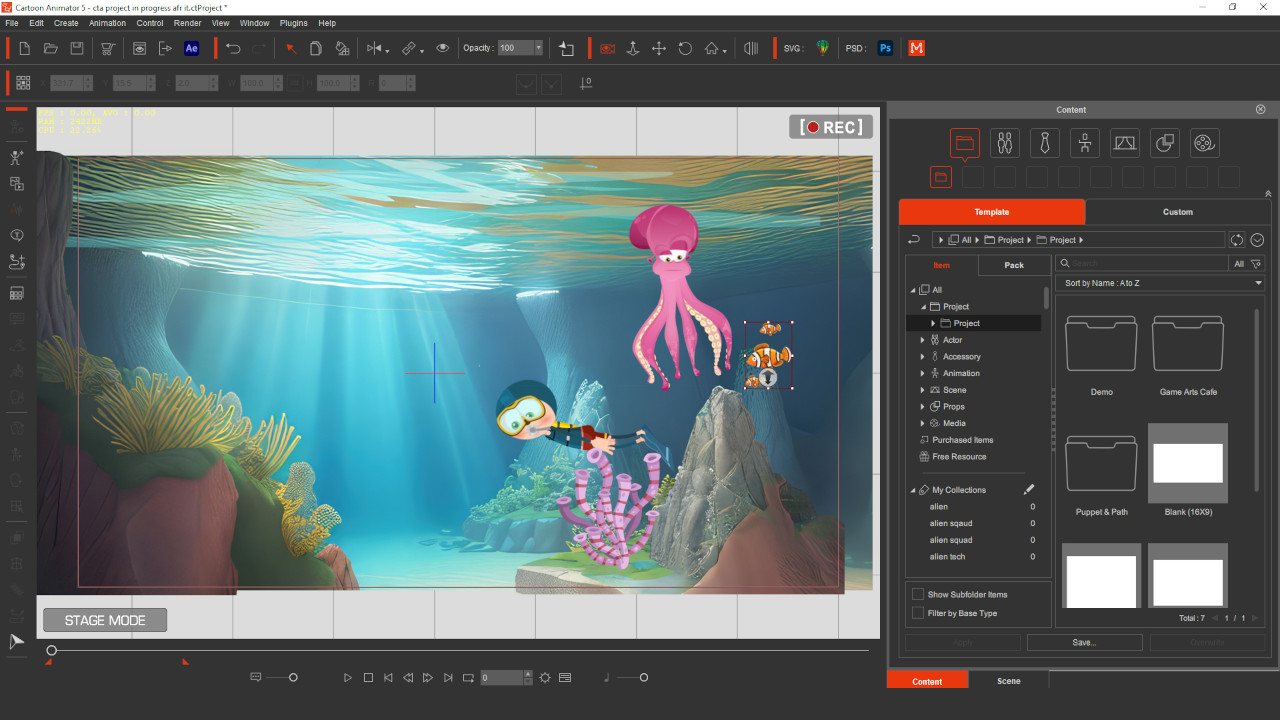
The screenshot above shows a scene set up in Stage Mode. This scene was bought in as a Photoshop PSD file, maintaining its layers so we can move our actors around inside the scene, both in front of and behind objects, and then move our camera about to create a sense of depth to our scene.
You can instantly switch to 3d view to see where all your characters and prop elements sit on the stage, as shown below.
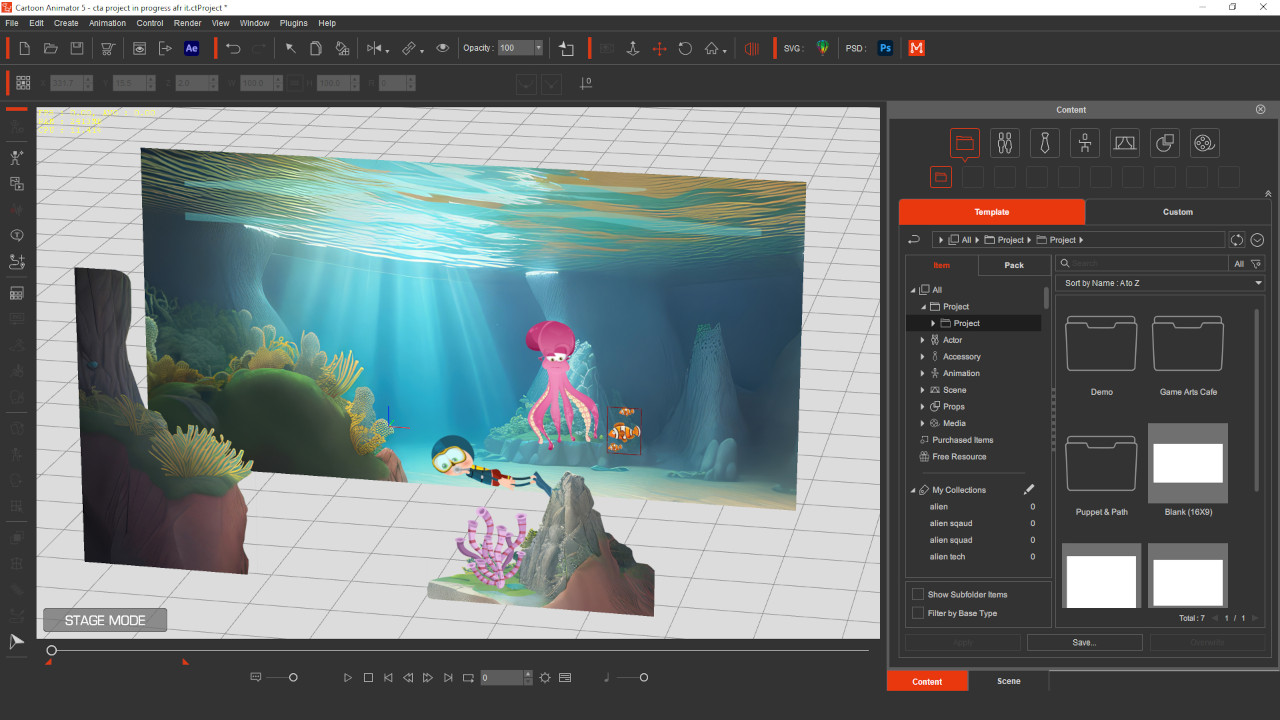
To introduce an actor to your scene, you can simply drag and drop them from your Content Manager. By adding any one of the hundreds of premade motions to your actor, we could have our scuba diver swim instantly without the need to keyframe his movement or draw individual frames. Cartoon Animator’s premade motions do all the hard work and give perfect results every time.
With Motion Pilot, you can now make the scuba diver automatically swim as you pilot him around the screen using your mouse. In Motion Pilot, there is a section called Motion. Check the Blend Motion box, then drag and drop your swim motion onto the text box. If you only want him to swim forward, scroll up to Face Cursor and turn that off so he doesn’t flip directions as he swims.
Position your scuba diver to where he will begin in your animation, and then, before recording the screen, you can select practice to rehearse your motion. Once you click Preview, move your mouse over the scuba diver and hit the space bar. Watch him come to life and swim, following your mouse movement in real time.
You can change the speed at which an actor moves using the Speed slider.
Once you have rehearsed your animation, do the same again, only this time hit Record, to capture all of your character’s animation in real time. Moving your character around feels more like playing than animating, as you become the actor and put your performance into their motions.
From frame zero, hit Play on the timeline and watch your new animation playback. What would have taken hours of tedious keyframing and animation skills has been completed in mere seconds thanks to Motion Pilot and has produced the smoothest result possible.
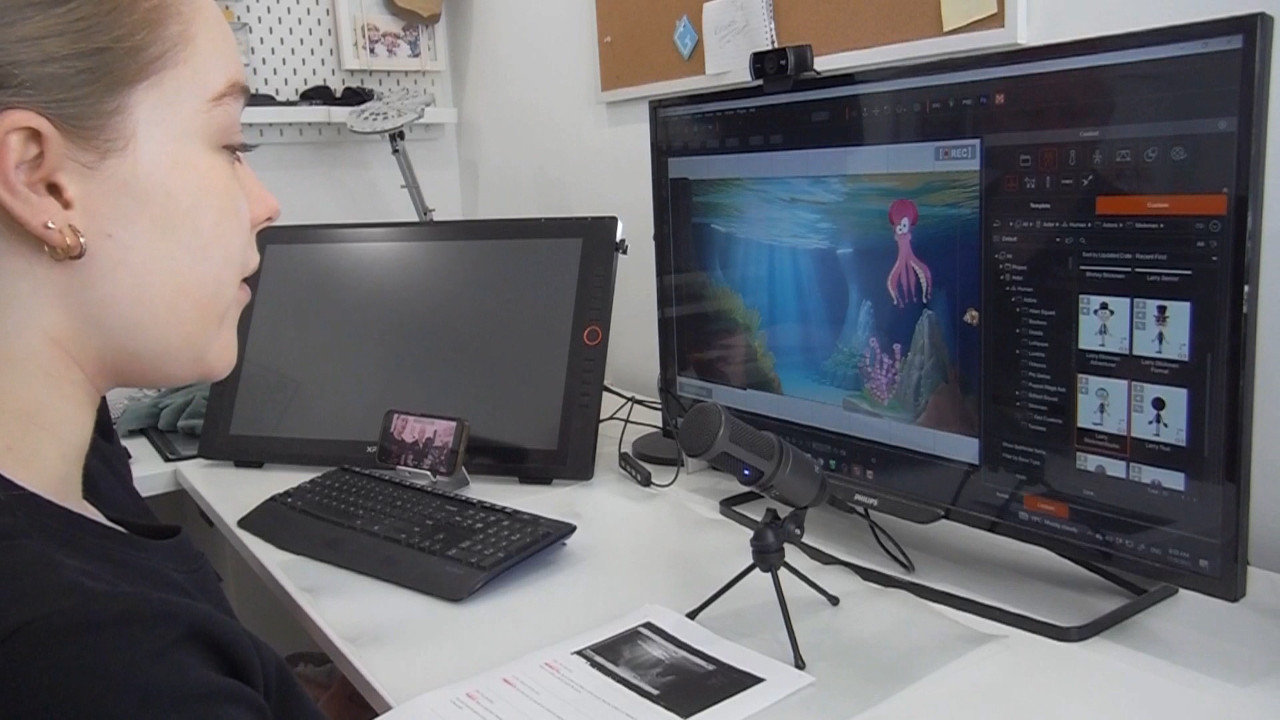
Even after you have completed many frames of animation, Cartoon Animator allows you to rewind through your project and add new animation or even alter the animation you have created so far.
The octopus actor in our project has Spring Bones built into his body rig, which you can apply to any CTA actor. Spring Bones allow character parts like limbs, hair, and accessories to wobble and bounce about in real time automatically, with no need for keyframing from the animator. Spring Bones dramatically reduces the amount of time it takes to produce 2d animation and, at the same time, provides realistic and smooth motion results.
Instead of adding a motion to the octopus, as we did with the scuba diver, this time, we were the puppeteer and moved him about while we recorded his movements in real time. After recording the motion of the octopus, we could playback our animation to see your octopus and scuba diver swimming together.
Animation has never been so easy or fun! You can control any character or prop using Motion Pilot, moving them about like a puppet and recording to create animation in real time.
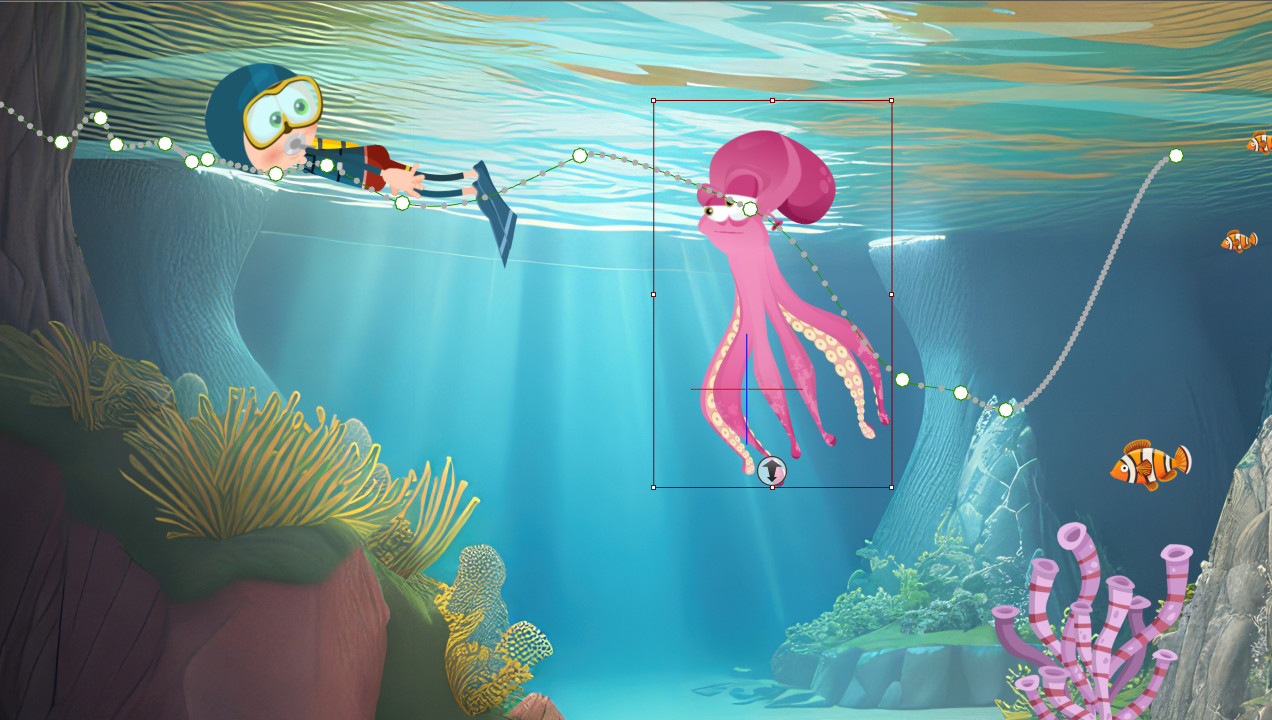
We were able to pilot the fish in our scene using the same real-time puppetry applied to the octopus. In addition, using a Motion Pilot feature called Flock Settings, we could make duplicates of the fish and have them follow the leader. Flock Settings give the option to select multiple items, such as the children following the parents, with preset time delays and in various patterns. This is the ideal way to create animation of groups like swarming insects or random swirling leaves blowing about in the wind. Again, this type of animation would otherwise require a high degree of skill and a large amount of time to execute, but it can now be done in seconds by artists of all skill levels.
Even though Motion Pilot makes animation fast, fun, and easy, it is still an incredibly powerful tool that gives you total control over your animation. For instance, we saw that Maddison and I could animate the octopus in real time just by moving the mouse around. But even after the motion was recorded, we could go back and add more character animation to our actors.
Using Cartoon Animators 360 Head function, we made the octopus turn its head in the direction it was swimming. We could keyframe the rotation of the actor’s head and even add in facial animation like blinking and lip-syncing to voiceover tracks.
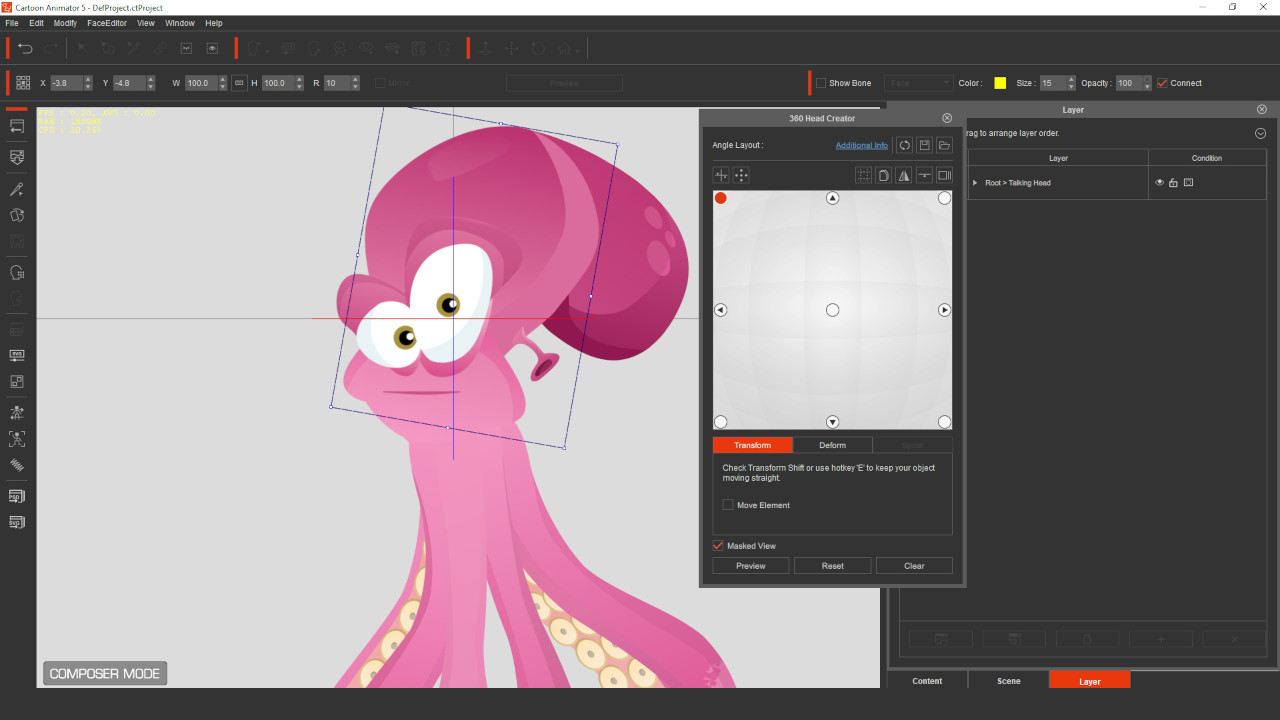
Spring Bones were easily added to the flat PNG fish props to make them move in a more dynamic way, as shown in the image below. Then, using the Wave function of Motion Pilot, we could have the fish move automatically, controlled by the parameters we set. For instance, by adjusting the Y-axis of the Move Amplitude, the fish will now bob up and down in the water on its own. Changing the Loop Duration determines how fast or slow this motion is. You can even tell Cartoon Animator whether you want the fish’s movement to be constant or random.
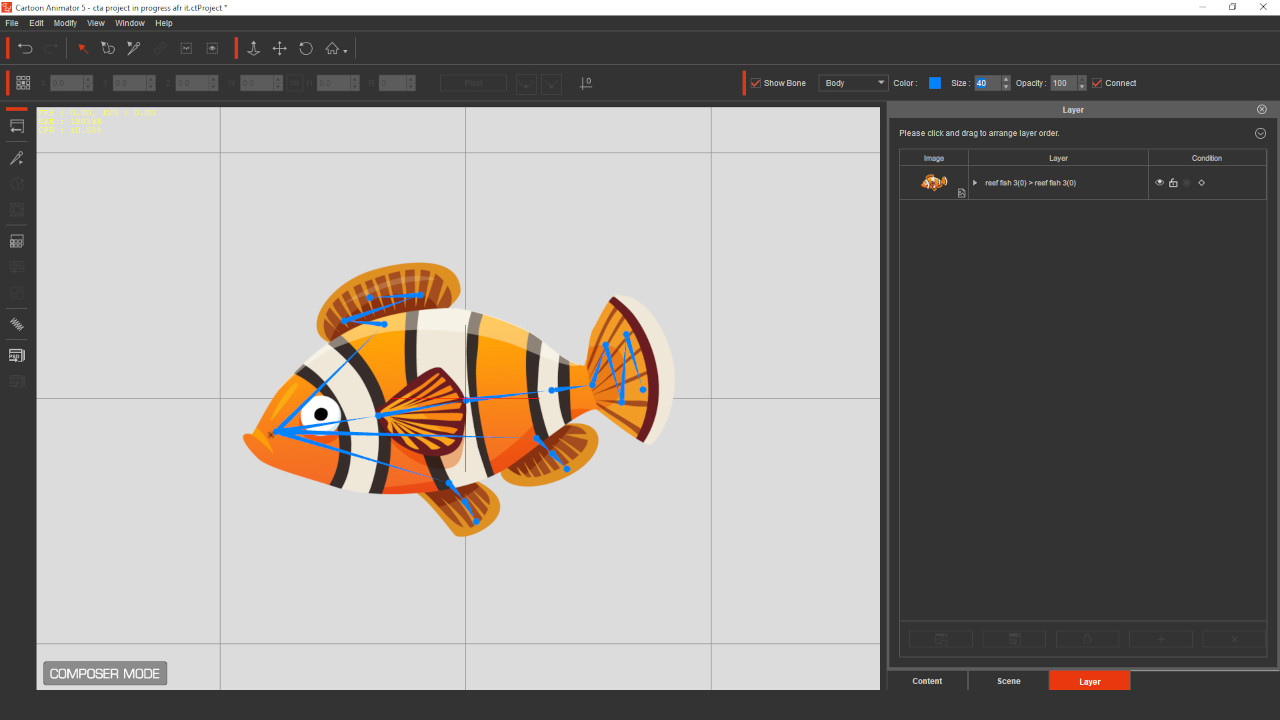
As well as puppeteering your actors in real time, you can create a specific path your actors can follow, giving you total control over their movement. After plotting a path with mouse clicks, you can link your actor to the path it will follow as the animation plays. You can then determine how long the actor will progress along that path. In the image below, the red line is the path that has been manually drawn for the fish to follow.
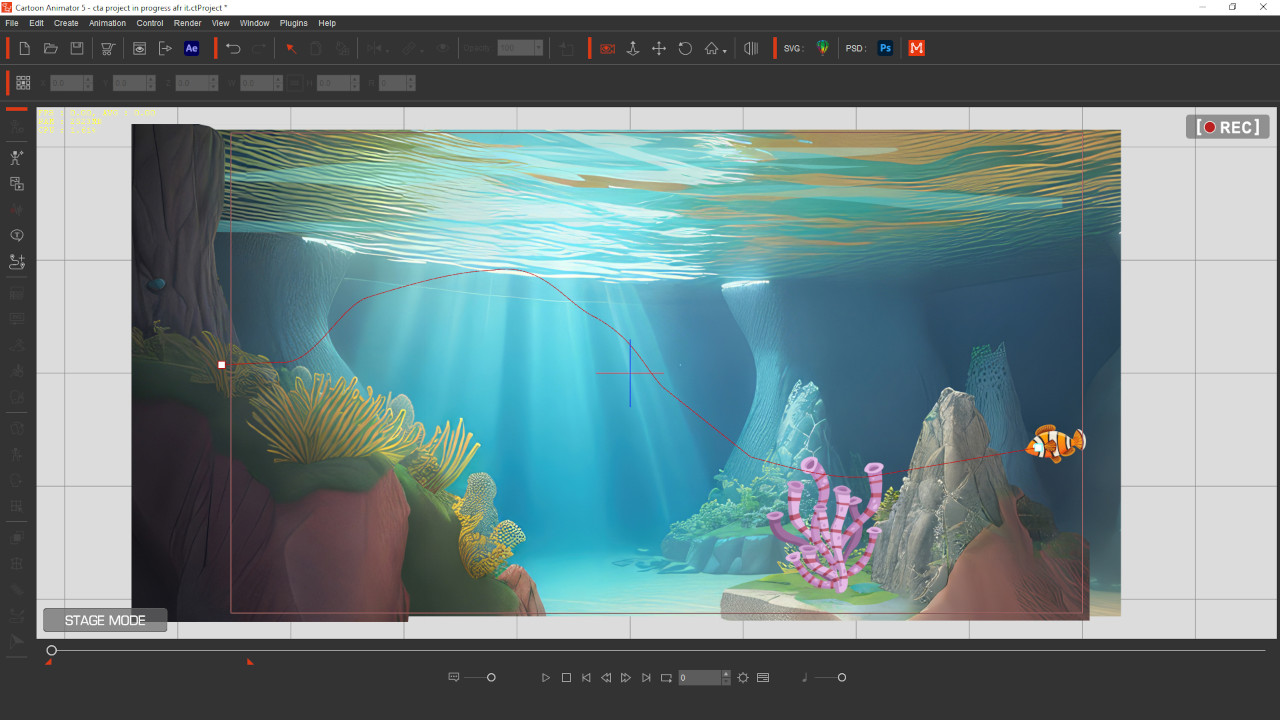
Your actors don’t have to move side to side and up and down, either. In Cartoon Animator, you can build your scenes so they have camera depth. All of the elements in your scene are layered, from close to the camera to off in the distance. This means you can have your actors move in front of and behind objects and control this during live recording with Motion Pilot by adjusting the Z-axis. We could even use the Scale function to make actors larger as they moved closer to the camera and smaller as they moved farther away.
There are many different ways you can control your actors with Motion Pilot, and changing the parameters for how they move is fast and easy, giving instant results that you can preview before recording your final movie.
Finally, you can decide whether you want your actor to move in time with your mouse or, using the Lazy Mouse function, you can have the actor follow along at a slower, smoother pace.
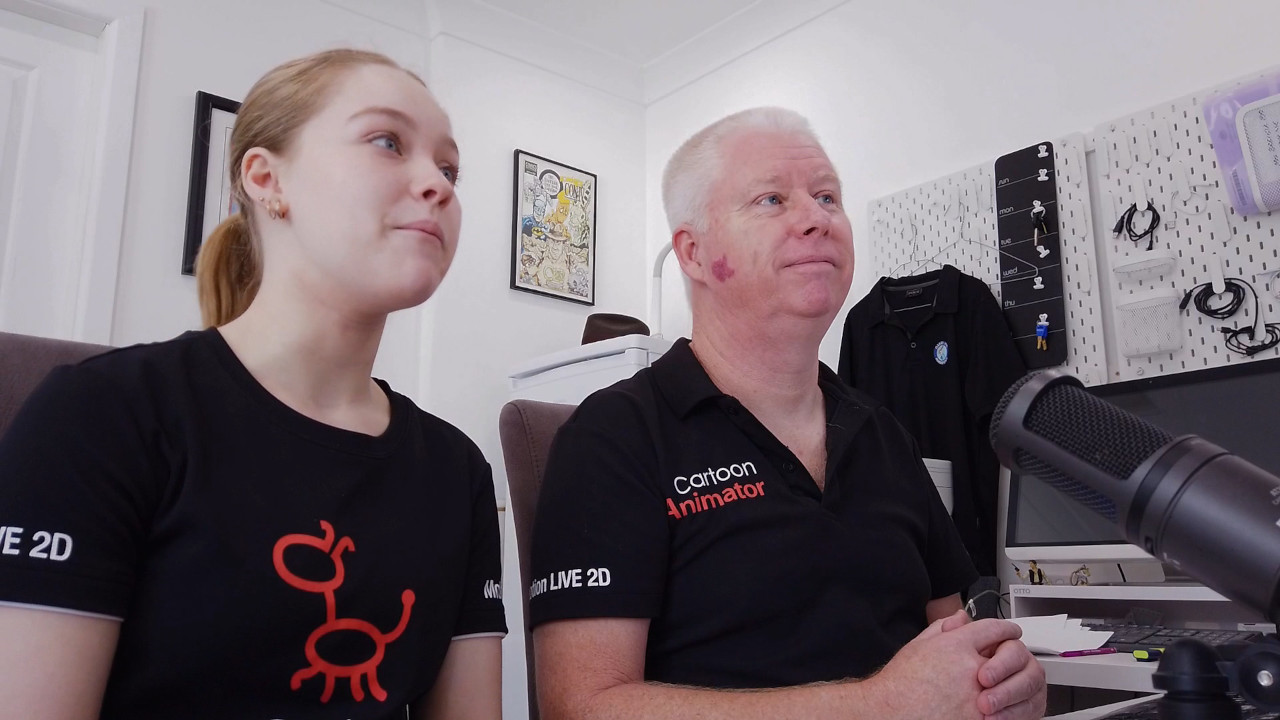
Maddison and I had so much fun working together on this Motion Pilot project. Anyone of any animation skill level, advanced, amateur, or even zero experience, can produce quality animation instantly with CTA5.
Learn more about CTA here.
For a free for 30 days trail including 1,700+ ready-made assets, click here.
Pictured at top: Maddison Pye

.png)
